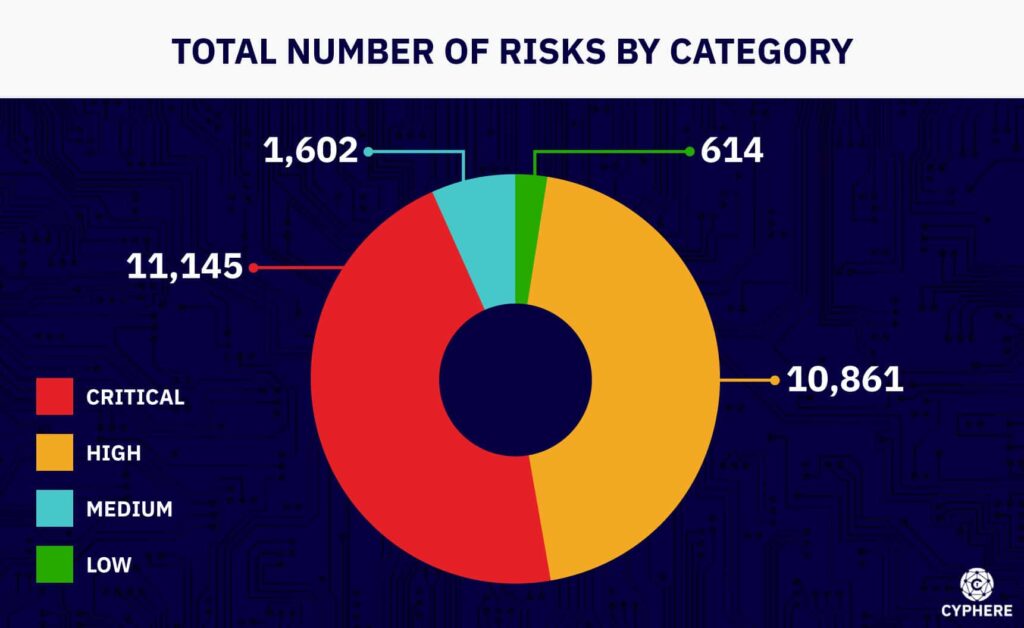
Organisations require robust security measures that go beyond surface-level checks. Frankly, those days are gone now. White box penetration testing emerges as a powerful tool in this arsenal, offering a comprehensive security assessment by leveraging “insider” knowledge. Let’s delve into what white box penetration testing entails, its methodologies, and real-world examples illustrating its effectiveness.
We’ll explore the methodologies employed and real-world examples highlighting the types of vulnerabilities it can uncover.
What is White Box Penetration Testing?
White box penetration testing, a comprehensive security assessment, gives testers insider knowledge. They gain access to the system’s source code, architecture diagrams, network maps, and credentials. This privileged perspective enables them to simulate real-world attack scenarios from within, providing a thorough evaluation of potential security risks.
Why is the White Box Penetration test Essential?
White box penetration testing has become an increasingly important security strategy component due to the limitations of traditional penetration testing methods. While traditional “black box” testing offers value by simulating external attacks, it often fails to uncover vulnerabilities within a system’s internal structure.
White box security assessments, on the other hand, address these limitations by:
Comprehensive Coverage: Testers meticulously analyse code line-by-line, pinpointing vulnerabilities in logic and assessing the effectiveness of security measures.
In-depth Analysis: White box penetration test goes beyond surface-level vulnerabilities, revealing flaws that black box assessments might miss. This is especially crucial for complex systems where vulnerabilities can be hidden deep within the codebase or architecture.
Targeted Remediation: The detailed insights gained from white box penetration testing empower developers to implement targeted fixes, ensuring the system’s security is not compromised.
Proactive Security: By identifying and addressing weaknesses before they can be exploited, white box testing shifts the focus from reactive to proactive security, reducing the risk of successful cyberattacks.
Real-world examples where White Box Testing is invaluable
Let’s explore scenarios where white box testing has proven invaluable:
- Web Application Security: Imagine a company launching a new online service. Before going live, a white box penetration test is conducted. Testers meticulously examine the source code for access controls, API vulnerabilities, and input validation issues such as SQL injection and cross-site scripting. By identifying and fixing these flaws, the company ensures the application has looked into real-life weaknesses that attackers could have targeted.
- Software Product Security: A software company is preparing to release a significant update. White box testing is employed to assess the software’s security posture. Penetration testers delve into the code, APIs, and cryptographic implementations, uncovering potential weaknesses that malicious actors could exploit. By addressing these vulnerabilities before release, the company protects its users and reputation and demonstrates good security hygiene in its software development lifecycle.
The infamous 2017 Equifax breach underscores the importance of white box testing. Attackers exploited a known vulnerability in the Apache Struts framework, which remained unpatched due to inadequate code review and internal assessments. White box testing could have identified and addressed this critical flaw, potentially preventing the massive data breach.

Cyber attacks are not a matter of if, but when. Be prepared.
Box-ticking approach to penetration tests is long gone. We help you identify, analyse and remediate vulnerabilities so you don’t see the same pentest report next time.
White Box Testing vs. Gray Box Testing vs. Black Box Penetration Testing
White box testing offers the most comprehensive assessment, as penetration testers can access source code, architecture diagrams, and credentials. This enables in-depth analysis, targeted remediation of vulnerabilities, and a proactive security stance.
However, white box testing requires more resources and time than other methods. In a white box pentest, testers have full access to the system’s insides, allowing for a highly detailed security assessment; therefore, it is also named precise box testing or transparent box testing.
Grey box testing balances the white box test and the black box test. Penetration Testers have partial knowledge and some access to internal information. Gray box testing combines the strengths of white and black box testing, offering a broader scope of analysis than the black box penetration test while being less resource-intensive than the white box. However, some vulnerabilities might still be missed due to limited visibility.
Black box testing simulates real-world attack scenarios where testers lack internal system knowledge. While this method is cost-effective and can identify vulnerabilities that an external attacker might exploit, it has a limited scope. It might miss vulnerabilities hidden within the system’s internal logic.
How Do We Perform White Box Penetration Testing?
White box test methodology follows a structured approach to ensure a comprehensive assessment:
Planning and Scoping
Define the scope of the testing, identify target systems and assets, and gather relevant information, including source code, architecture diagrams, and network maps.
Asset and Control Mapping
Identify critical assets within the system and understand the existing controls that protect them. This helps prioritise testing efforts and focus on the areas with the highest potential impact.
Failure Planning
Assume that compromises are inevitable and defences may fail. Plan for scenarios where security measures are breached and identify potential mitigation strategies.
Source Code Review
Analyse the source code for injection flaws, authentication issues, and insecure data handling practices. This step requires expertise in programming languages and secure coding practices offered through static and dynamic analysis methods.

Secure code is an essential element for business growth
Show your customers and supply chain you can manage application risks with secure coding practices.
Dynamic Analysis
Test the running application to uncover security vulnerabilities in its logic and behaviour. This may involve fuzzing, fault injection, and manual exploitation of potential weaknesses.
Vulnerability Assessment
Evaluate the severity and potential impact of discovered security vulnerabilities. Prioritise findings based on their potential for exploitation and the value of the assets they could compromise.
Failure Testing
Conduct targeted tests, often with privileged access, to assess specific workflows and the effectiveness of existing security investments. This helps validate the system’s resilience to real-world attack scenarios.
Reporting
Provide a detailed pen testing report outlining the identified vulnerabilities, their potential impact, and recommended remediation steps. The report should be actionable and prioritised, guiding developers and security teams in addressing the most critical issues first.
White Box Penetration Testing Examples
Web Application Vulnerabilities
Testers might find a web application’s source code failing to sanitise user input, leading to injection risks. They could also discover misconfiguration, broken access controls and input validation related cross-site scripting (XSS) vulnerabilities where malicious scripts can be injected into web pages.
Network Infrastructure Vulnerabilities
An internal infrastructure assessment might reveal active directory misconfiguration that impacts the entire internal structure regarding how authentication and authorisation are performed across various servers, workstations, and other components. Similarly, statistical password analysis involving password cracking, analysis of controls and group policy has educated customers about their cyber hygiene and security culture.
Source Code Vulnerabilities
Penetration Testers might identify buffer overflows in the code, where data exceeds allocated space, potentially leading to crashes or allowing code execution. Hardcoded credentials within the code could also be easily exploited.
Vulnerabilities That White Box Penetration Testing Can Detect
White box penetration testing detects weaknesses that can never be captured using black box or other forms of penetration testing. The scope coverage in terms of depth is unmatched with white box penetration testing, making it the best methodology to be followed for improving the security of products or services.
White box pentesting can uncover a wide range of vulnerabilities across various categories:
Web Application Vulnerabilities
- Injection Flaws (SQL Injection, XSS, Command Injection)
- Broken Authentication
- Sensitive Data Exposure
- XML External Entity (XXE) Attacks
- Insecure Deserialisation
- Security Misconfigurations
Network Infrastructure Vulnerabilities
- Firewall Misconfigurations
- Insecure Remote Access Protocols
- Weak or Default Passwords
- Insecure Information Storage Practices revealing PII information about staff and customers
- Misconfigured Network Services
Source Code Vulnerabilities
- Buffer Overflows
- Integer Overflows
- Format String Vulnerabilities
- Use-After-Free Vulnerabilities
- Race Conditions
- Hardcoded Credentials
White Box Security Testing Tools
- Static Application Security Testing (SAST) Tools: SonarQube, Veracode, Checkmarx
- Dynamic Application Security Testing (DAST) Tools: Burp Suite, OWASP ZAP
- Debuggers: GDB, WinDbg
- Disassemblers: IDA Pro, Hopper
Techniques in White Box Pen Testing
- Contextual Awareness: The most significant and crucial amongst all the white box security testing techniques is the penetration tester spending time via walkthroughs with the internal development team (or third party) and reading documentation to understand the nitty-gritty of everything. Contextually aware of functionalities and business logic is key before the white box pentest process starts.
- Automation: SAST and DAST scanners automate the process to identify potential vulnerabilities.
- Manual Testing: Testers leverage their knowledge of the source code to probe for weaknesses and exploit vulnerabilities manually.
- Code Review: A thorough analysis of the source code to identify insecure coding practices, logic errors, and potential vulnerabilities.
- Fuzzing: Automated testing involves injecting invalid or unexpected input into an application to trigger errors and uncover vulnerabilities.
Emerging Trends in White Box Pentesting
White box penetration testing is constantly evolving, incorporating new technologies and approaches to stay ahead of the ever-changing threat landscape:
- AI-Powered Code Analysis: Artificial intelligence is increasingly used to enhance code analysis tools. Machine learning algorithms can identify patterns and anomalies in code that might indicate vulnerabilities, speeding up the testing process and potentially uncovering issues that human reviewers might miss. Examples include coderabbit and other AI solutions for code review.
- Integration with DevOps: The integration of white box pentesting into the DevOps (Development and Operations) lifecycle is gaining traction. By incorporating security testing early and continuously into the development process (shift left), organisations can quickly identify and fix vulnerabilities, reducing the risk of security issues in production environments.
- Cloud-Based Testing Platforms: Cloud-based white box pen test platforms are emerging as a convenient and scalable solution. These platforms offer on-demand access to testing tools and environments, eliminating the need for organisations to invest in and maintain their testing infrastructure.
When Should You Consult for White Box Pen Testing?
Businesses benefit from white box penetration testing consultancy in various scenarios.
- When an organisation develops or maintains critical applications or systems that handle sensitive data.
- When facing strict compliance requirements (e.g., PCI DSS, ISO 27001, HIPAA, DTAC), software development companies need assurance to adhere to specific guidelines.
- After significant changes to your codebase or infrastructure
- When seeking a comprehensive and in-depth security assessment.
How Much Does White Box Testing Cost in the UK?
White box penetration testing costs vary depending on the complexity and size of the system, the scope of the assessment, and the expertise of the testing team. Expect to pay from £4000-£7000 for smaller applications and tens of thousands for more extensive, complex systems.
How Can Cyphere Help?
Cyphere specialises in providing tailored white box penetration testing services. Our experience, passion for cyber security and sector-specific expertise are crucial to identifying vulnerabilities, supporting risk remediation and delivering actionable reports with clear recommendations to strengthen your security posture.
Conclusion
White box penetration testing provides an in-depth security assessment, uncovering internal and external vulnerabilities before attackers can exploit them. While it requires more investment, the benefits of a robust security posture outweigh the cost.
As technology evolves, so will white box penetration testing methods, offering even greater efficiency in the fight against cyber threats. Consider partnering with a white box testing professional to gain a security advantage and ensure the safety of your data.















